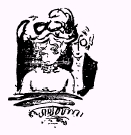| Page
9 : A bird of Paradise |
|||
In 1913 Ravel composed the music and the text of Trois beaux Oiseaux du Paradis. |
|||
 |
|||
| A description of a
special Bird of Paradise is given, in 1903, by Rémy de
Gourmont : |
|||
|
" Some birds of Australia and New
Guinea make love with a charming ceremonial. To attract its lover, the
male builds a true "countryhouse" or, if it is less skilled, a rustic
cradle of grass. It plants twigs, green sprigs - it is small sized like
a blackbird - that he bends in a vault often larger than a1 meter long.
The grounds, it litters it with leaves, flowers, soft fruits, whites
littles bones, shiny pebbles, bits of metal, jewels stolen in the
neighbourhood. One tells that the Australian settlers, when they're
looking for a ring or a pair of scissors, go and fetch them in these
tents of grass. Our magpie has a similar taste for flashing objects.
One made tales about that. The Amblyornis inornata (in French,
"jardinier" de Nouvelle-Zélande : "gardener" of New
Zealand) is even cleverer. It is in the extend of making believe in a
human work. It makes, with his sole beak an legs as well and even
better than any peasant, showing a liking for "décor" that
lack them often.
One seeks the origine of Art : here is it, in this sexual game of a bird. Our aestethical manifestations are but the developent of the same instinct of seduction that, in some species overexcites the male, in others, enliven the female. If there is surplus, it will be spent without aim, just for pure pleasure : it is human art; its origin is that of birds' art and insects' art." (more of that text, in French, there) |
|||
 |
|||
Look at the work of the "jardinier de Nouvelle-Guinée". |
|||
David Lamaze
Le Cygne de Ravel ~ Le Coeur de l'horloge
Le Cygne de Ravel ~ Le Coeur de l'horloge